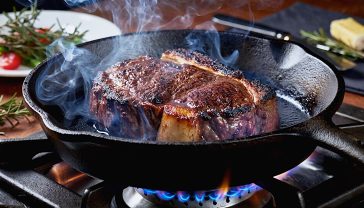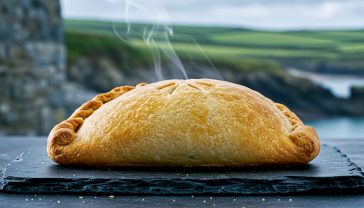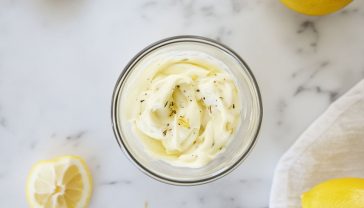The Great British Pub: More Than Just a Pint
Your ultimate guide to the British pub. From Roman taverns to modern gastropubs, we explore the history, culture, and enduring appeal of this UK institution.

This post may contain affiliate links. If you make a purchase through these links, we may earn a commission at no additional cost to you.
Step through the door of any proper British pub, and you’re stepping into history. It’s more than just a place to get a drink. It’s the nation’s living room, a place where stories are swapped, deals are done, and friendships are forged. From the sticky carpets of a backstreet boozer to the polished brass of a fancy gastropub, these watering holes are the beating heart of British culture.
But what exactly makes a pub a pub? It’s not just the beer, though that’s a big part of it. It’s the unique mix of people, the familiar smell of ale and old wood, and the feeling that you’re part of something that’s been going on for centuries. This is the story of the British pub: where it came from, what it means to us, and where it’s heading. So, pull up a stool, get comfortable, and let’s explore the wonderful world of the local.
What Makes a Pub a Pub? The Core Ingredients
At first glance, a pub might just seem like a bar. But it’s a bit more complicated than that. A true British pub has a few key ingredients that set it apart. Think of it like a recipe for the perfect social hub.
The Landlord or Landlady: The Heart of the House
The person behind the bar is the captain of the ship. Traditionally known as the landlord or landlady (or publican), they do more than just pull pints. They’re the host, the confidant, and often the face of the community. A good landlord knows their regulars by name, remembers their usual drink, and can chat about everything from the weather to the football scores.
They set the tone for the entire place. A cheerful, welcoming publican can make a pub feel like a second home. In many villages, the landlord isn’t just a business owner; they’re a central figure in local life, organising charity events, hosting the pub quiz, and keeping an ear to the ground for local gossip. It’s a tough job with long hours, but for many, it’s a way of life.
The Bar: The Pub’s Stage
The bar is the centre of the action. It’s where you order your drinks, catch up with the staff, and watch the world go by. A traditional pub bar is a thing of beauty. Often made of dark, polished wood, it’s lined with gleaming brass hand-pulls used to serve cask ale, or ‘real ale’.
These hand-pulls are a classic feature of British pubs. Unlike fizzy lager taps, they require the bar staff to manually pull the beer up from a cellar below. This process is gentler on the beer, giving real ale its distinctive smooth texture and complex flavour. Watching a skilled bartender pour the perfect pint is part of the theatre of the pub.
Behind the bar, you’ll find shelves stacked with an impressive array of spirits, from familiar gins and whiskies to more obscure liqueurs. And, of course, there are the optics—those clever upside-down bottle holders that measure out a perfect shot.
The Cellar: Where the Magic Happens
Beneath the pub lies the cellar, a cool, dark space that’s crucial for serving a good pint. This is where the beer is stored, specifically the casks of real ale. Cask ale is a living product. It contains live yeast and continues to ferment and mature in the cask.
Keeping it at the right temperature (usually between 10-14°C) is vital. Too warm, and the beer will taste off; too cold, and it will be hazy and lifeless. The landlord has to be a bit of a scientist, carefully managing the cellar to make sure every pint served is in perfect condition. It’s a craft that takes years to master and is a source of immense pride for publicans.
The Layout: Snugs, Lounges, and Public Bars
Pubs are often divided into different areas, each with its own vibe. In older pubs, you might find a snug. This was a small, private room, sometimes with its own separate entrance to the bar, where people could have a quiet drink away from the main crowd. Historically, women were often only permitted in the snug or lounge.
The public bar was traditionally the more basic, lively area, often with simple wooden floors and benches. It was seen as the domain of working men, where games like darts and dominoes were played. The saloon or lounge bar, on the other hand, was a bit more upmarket and comfortable, with carpets, upholstered seating, and a quieter atmosphere. It was considered more respectable and was often where couples and families would sit.
While many modern pubs have knocked these separate rooms into one big open-plan space, the idea of different zones for different moods often remains. You’ll still find quiet corners for a private chat and livelier areas near the bar or the TV showing the match.
A Journey Through Time: The History of the British Pub
The story of the pub is as old as the roads of Britain. It started with the Romans and has been evolving ever since, reflecting the changes in British society along the way.
Roman Roots: The First Tabernae
When the Romans arrived in Britain nearly 2,000 years ago, they built a vast network of roads. To serve their thirsty soldiers and officials travelling along these routes, they set up tabernae. These were shops that sold wine, and they were the very first version of our pubs.
The locals, who were used to drinking ale made from fermented grain, soon got a taste for Roman wine. These tabernae became places where Roman and British cultures mixed for the first time. When the Romans left, the idea of a public drinking house stuck around.
Anglo-Saxon Alehouses
After the Romans, the Anglo-Saxons took over. They were big fans of ale, and drinking was a huge part of their culture. Alehouses began to spring up in villages across the country. These were usually just ordinary houses where the woman of the house, known as an ‘ale-wife’, would brew her own ale.
To let people know a fresh batch was ready, she would place a green bush or branch on a pole outside her door. This ‘ale-stake’ was one of the first pub signs. These alehouses were informal, cosy places where neighbours would gather to drink, sing, and share news.
The Rise of Inns and Taverns
During the Middle Ages, travel became more common. Monasteries, which offered accommodation to pilgrims and other travellers, started to provide refreshment too. This led to the growth of inns. Inns were larger than alehouses and offered food and a bed for the night, as well as drink. They were often located along major travel routes and became important hubs.
At the same time, taverns started to appear in towns. Taverns were a step up from alehouses and primarily sold wine, making them popular with the wealthier classes.
In 1393, King Richard II passed a law forcing all places selling ale to have a sign outside so that the official ‘ale-conner’ (or ale-taster) could easily identify them for inspection. This is why pubs have such fantastic and imaginative names and signs today—The Red Lion, The Crown, The King’s Head, and so on.
The Gin Craze and the Beerhouse Act
The 18th century brought a new challenge: gin. The ‘Gin Craze’ swept through cities like London, as cheap, potent gin led to widespread drunkenness and social problems. The government wanted to encourage people to drink beer instead, which was seen as a healthier, more wholesome drink.
In 1830, they passed the Beerhouse Act. This made it much easier and cheaper to get a licence to brew and sell beer. Thousands of new ‘beerhouses’ opened, often in people’s front rooms. This created huge competition and led to the birth of the pub as we know it today. To attract customers, publicans started to offer entertainment like music and games, and pubs became grander, with ornate decorations like etched glass and tiled walls.
The Victorian Pub: Palaces of the People
The Victorian era was the golden age of the pub. As cities grew during the Industrial Revolution, pubs became magnificent ‘palaces of the people’. Architects designed huge, lavish pubs with multiple bars, glittering mirrors, and intricate woodwork. They were a glamorous escape from the grim reality of factory work and crowded housing.
This was also when the big breweries started to take over. They bought up pubs and tied them into deals where the pub could only sell that brewery’s beer. This ‘tied house’ system still exists today, though it’s less common than it used to be.
The 20th Century and Beyond
The 20th century saw many changes. Two world wars brought stricter licensing hours, forcing pubs to close in the afternoon—a rule that lasted for decades. The rise of television and cheap supermarket booze meant pubs had to work harder to attract customers.
In the 1970s, a consumer group called the Campaign for Real Ale (CAMRA) was formed to fight back against the bland, fizzy keg beers that big breweries were pushing. CAMRA championed traditional cask ale and helped spark a revival in small, independent breweries.
More recently, the rise of the gastropub in the 1990s changed the game again. These were pubs that focused on serving high-quality, restaurant-standard food. It brought a new crowd into pubs and proved that they could be destinations for dining as well as drinking.
The Pub in British Culture: More Than Just a Boozer
The pub is woven into the very fabric of British life. It’s a stage for our national dramas, a clubhouse for our communities, and a mirror reflecting our society.
The Community Hub
In many towns and villages, the pub is the last remaining public indoor space. It’s where you’ll find the local darts team practising on a Tuesday night, the book club meeting in a quiet corner on a Wednesday, and the whole village celebrating a wedding or mourning a loss. It’s a truly multi-purpose space.
For many people, especially older or single men, the pub provides a vital social network, a remedy for loneliness. It’s a place where you can have a conversation with someone you might never otherwise meet. This role as a community hub is so important that when a local pub is threatened with closure, villagers often band together to save it, sometimes even buying it themselves to run as a community-owned pub.
A Place for Every Occasion
The pub is there for all of life’s moments, big and small.
- After work: The post-work pint is a British institution, a way to decompress and switch off from the stresses of the day.
- Sunday lunch: The pub Sunday roast is a weekend ritual for millions of families. A hearty plate of roast beef with all the trimmings, enjoyed in a cosy pub, is the perfect end to the week.
- Watching the match: On a big match day, the pub becomes a stadium in miniature. Fans decked out in their team’s colours crowd around the screens, sharing the agony and ecstasy of every goal.
- The pub quiz: A classic British pastime. Teams huddle together, wracking their brains to remember the capital of Mongolia or the name of the fourth James Bond. It’s a brilliant mix of competition, teamwork, and mild intellectual humiliation.
Pub Etiquette: The Unwritten Rules
Walking into a pub for the first time can be daunting, as there’s a whole set of unwritten rules to follow.
- No table service: In most pubs, you go to the bar to order your drinks and food. Don’t sit at a table and wait for someone to come to you.
- Getting served: When the bar is busy, you need to subtly catch the bartender’s eye. Waving cash or shouting is a big no-no. Make eye contact, have your order ready, and be patient.
- Buying rounds: If you’re in a group, it’s customary to buy drinks in ‘rounds’. Each person takes a turn to go to the bar and buy a drink for everyone in the group. It’s considered very bad form to ‘duck your round’. Knowing whose round it is can be a source of intense debate.
- Tipping: Tipping isn’t generally expected in pubs. However, if you’ve had great service, it’s a nice gesture to say, “and one for yourself,” offering to buy the bartender a drink. They’ll usually just add the cost of half a pint to your bill.
A Tour of the Taps: What to Drink in a Pub
The choice of drinks in a modern pub can be overwhelming. But understanding the basics will help you find your perfect pint.
Real Ale: The Classic British Pint
Real ale, or cask-conditioned beer, is the traditional beer of Britain. Unlike most beers, it’s unfiltered and unpasteurised, and it undergoes a secondary fermentation in the cask in the pub’s cellar. This makes it a living product that needs to be cared for by the publican.
It’s served without any extra gas, which gives it a gentler, less fizzy carbonation and allows its complex flavours to shine through. It comes in a huge range of styles:
- Bitter: The classic session ale. Amber in colour with a good balance of malt sweetness and hop bitterness. Not actually very bitter!
- Pale Ale / IPA: Lighter in colour and often more heavily hopped, giving it citrusy, floral, or fruity aromas. India Pale Ale (IPA) was originally brewed strong and hoppy to survive the long sea journey to British troops in India.
- Stout / Porter: Dark, rich, and creamy, with flavours of coffee, chocolate, and roasted malt. Guinness is the most famous example of a stout.
- Mild: A darker, sweeter, and less alcoholic ale. It was once the most popular style of beer in Britain but is now rarer.
Lager, Cider, and Everything Else
Of course, pubs sell more than just real ale.
- Lager: This crisp, golden, fizzy beer is Britain’s most popular drink. Served cold, it’s refreshing and easy to drink. Famous brands include Carling, Fosters, and an ever-growing selection of ‘craft’ lagers from smaller breweries.
- Cider: Made from fermented apples (or pears, for perry), cider is particularly popular in the West Country. It can range from sweet and fizzy to incredibly dry and powerfully alcoholic (‘scrumpy’).
- Gin: Britain has gone gin-mad in recent years. Most pubs now have a huge ‘gin menu’, offering dozens of different craft gins, each served with a specific tonic and garnish.
- Whisky: Especially in Scotland, the pub is the perfect place to sample a ‘dram’ of single malt whisky. A good pub will have a wide selection from different regions, each with its own unique character.
- Low and No-Alcohol: Pubs are now offering a much better range of low-alcohol and alcohol-free beers, ciders, and spirits, catering for a growing number of people who want the pub experience without the booze.
The Modern Pub: Challenges and Changes
The British pub is facing some tough times. Rising costs, changing social habits, and competition from supermarkets have led to thousands of pubs closing down in recent years. The smoking ban in 2007 was a major challenge, forcing smokers out into the cold and changing the atmosphere inside.
But the pub is a survivor. It has always adapted to the times, and today is no different.
- The rise of craft beer: The craft beer revolution, inspired by the American scene, has brought a new energy to the pub world. Small, independent breweries are producing an incredible variety of exciting, flavourful beers, and pubs are showcasing them with tasting flights and knowledgeable staff.
- The focus on food: The gastropub model has shown that pubs can compete with restaurants. Many pubs now pride themselves on their food, using local, seasonal ingredients to create fantastic meals. This has broadened their appeal, making them places for the whole family.
- Creating experiences: Pubs are no longer just places to drink. They are becoming community and entertainment hubs. You can find pubs with their own cinemas, theatres, breweries, and even post offices. Live music, comedy nights, and farmers’ markets are all helping to bring people back through the doors.
- Community ownership: In a growing trend, local residents are clubbing together to buy their beloved local when it’s threatened with closure. These community-owned pubs are often thriving, as they are run by people who are passionate about creating a space that truly serves their neighbours.
The Enduring Appeal of the Great British Pub
So, what is the future of the British pub? It will no doubt continue to change and adapt. But its core purpose will remain the same. It is a place of connection, a place to escape the everyday, and a place that holds a mirror to our national identity.
The pub is where we celebrate our victories and drown our sorrows. It’s where we put the world to rights over a pint and a packet of crisps. It’s a uniquely British institution that has survived plagues, wars, and revolutions. In an increasingly digital and disconnected world, we need these real-life, face-to-face community spaces more than ever. The Great British Pub is not just a part of our history; it’s a vital part of our future. Long may it pour.
Further Reading
For those interested in delving deeper into the world of British pubs, these resources are highly recommended:
- The Campaign for Real Ale (CAMRA): The leading consumer organisation for pub-goers and real ale drinkers in the UK. Their website is a treasure trove of information. https://camra.org.uk/
- The Good Pub Guide: An annual guide that reviews and rates thousands of pubs across the country. A must-have for any serious pub explorer. https://www.thegoodpubguide.co.uk/
- The British Beer and Pub Association (BBPA): The trade association representing brewers and pub companies in the UK. Their website offers industry insights and statistics. https://beerandpub.com/
- Historic England – Pubs: A fascinating look at the architectural and historical significance of pubs from the national heritage body. https://historicengland.org.uk/whats-new/features/englands-historic-pubs/






